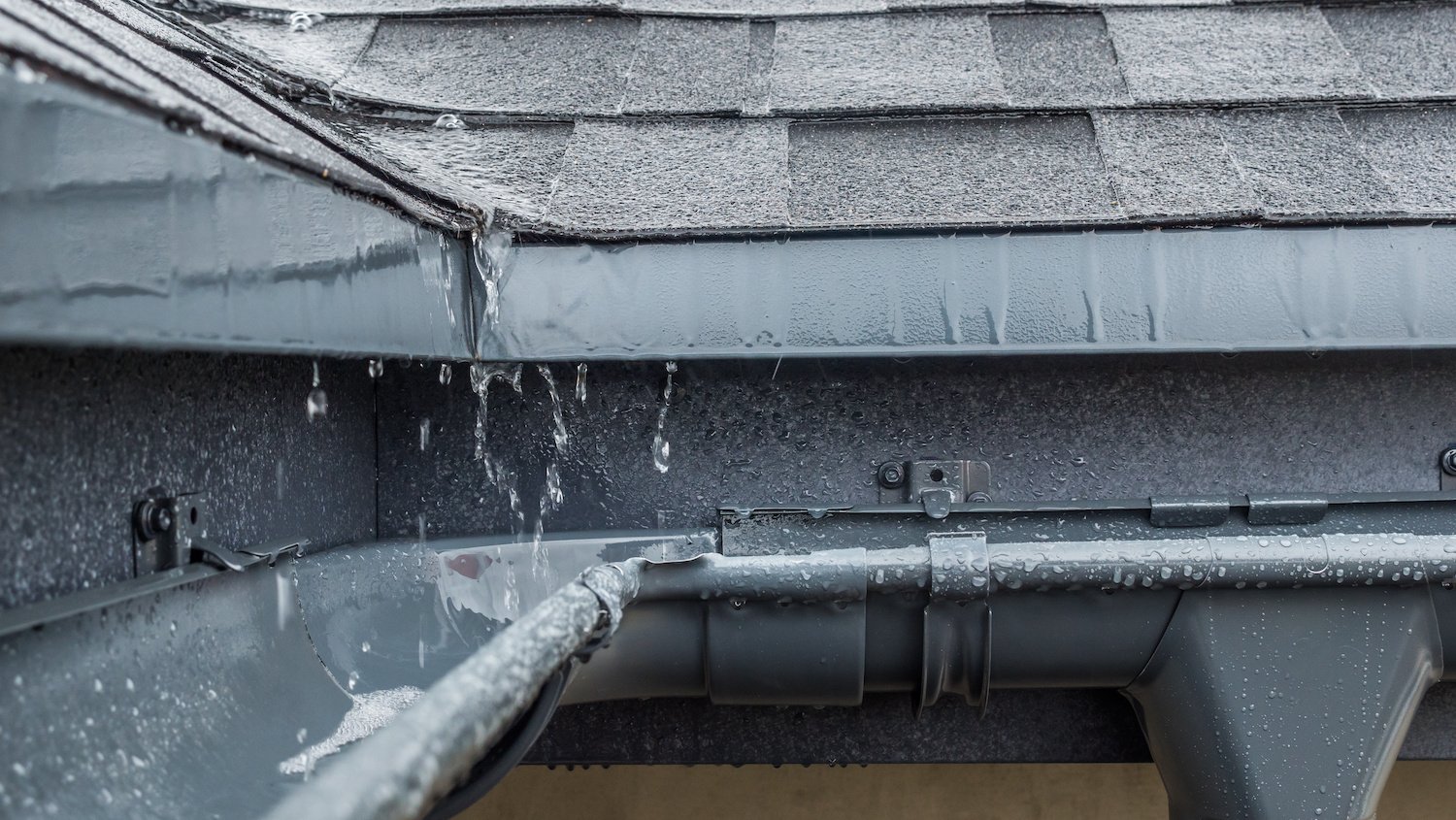Home>Garden Essentials>Why Is Seed Dispersal Important


Garden Essentials
Why Is Seed Dispersal Important
Modified: March 24, 2024
Discover the importance of seed dispersal in the garden and how it enhances plant diversity and ecosystem resilience.
(Many of the links in this article redirect to a specific reviewed product. Your purchase of these products through affiliate links helps to generate commission for Storables.com, at no extra cost. Learn more)
Introduction
Seed dispersal is a crucial process in the life cycle of plants and plays a vital role in maintaining the biodiversity and sustainability of ecosystems. It is the mechanism by which plants spread their seeds away from the parent plant, ensuring their survival and the continuation of their species. Through various methods such as wind dispersal, animal dispersal, water dispersal, and self-dispersal, plants have adapted unique strategies to ensure their offspring’s survival and colonization of new habitats.
In this article, we will explore the importance of seed dispersal and how it contributes to plant reproduction, the maintenance of biodiversity, and the prevention of overcrowding. We will also delve into the different mechanisms of seed dispersal, including wind, animal, water, and self-dispersal. Finally, we will discuss the impact of human activities on seed dispersal and the importance of conservation efforts to preserve this critical ecological process.
Key Takeaways:
- Seed dispersal is crucial for plants to spread their seeds, prevent overcrowding, and adapt to changing environments. It helps maintain biodiversity and ensures the survival of plant species.
- Human activities can disrupt seed dispersal, impacting plant diversity. Conservation efforts are essential to protect habitats and preserve natural ecosystems.
Read more: How Are Seeds Dispersed
Definition of Seed Dispersal
Seed dispersal refers to the process by which plants disperse or spread their seeds away from the parent plant, increasing the chances of their offspring’s survival and successful growth. It is a vital ecological process that allows plants to colonize new habitats, maintain genetic diversity, and adapt to changing environments.
When plants produce seeds, they invest a significant amount of energy and resources into their formation. These seeds contain the genetic information necessary for the development of new plants. However, if the seeds remain in close proximity to the parent plant, they may face competition for resources and become susceptible to diseases or predation.
To overcome these challenges, plants have developed various mechanisms to disperse their seeds over long distances. This ensures that the seeds are dispersed to new locations where they can find suitable conditions for germination and growth. Seed dispersal can occur through different agents, including wind, animals, water, and self-dispersal.
The ultimate goal of seed dispersal is to increase the chances of successful reproduction and the establishment of new plant populations. By spreading their seeds far and wide, plants increase their opportunities for outcrossing, which helps maintain genetic diversity within a species. This genetic diversity is crucial for the plants’ ability to adapt and survive in changing environments.
In summary, seed dispersal is the process by which plants ensure the distribution of their seeds to new locations. By dispersing seeds, plants increase their chances of survival, genetic diversity, and successful reproduction. This important process serves as a critical building block for the maintenance and sustainability of plant populations and ecosystems.
Importance of Seed Dispersal
Seed dispersal plays a crucial role in the survival and success of plants and is a fundamental process in maintaining the health and functionality of ecosystems. Let’s explore the key reasons why seed dispersal is of utmost importance:
- Plant Reproduction: Seed dispersal allows plants to reproduce and colonize new areas. By spreading their seeds, plants increase the chance of successful germination and growth in different habitats. This ensures the continuation of their species and promotes genetic diversity within the population.
- Maintenance of Biodiversity: Seed dispersal is essential for maintaining biodiversity within ecosystems. It helps to disperse seeds of different plant species to varying locations, which leads to the establishment of diverse plant communities. A diverse range of plant species supports a wide array of organisms, including insects, birds, and mammals, contributing to a healthy and balanced ecosystem.
- Prevention of Overcrowding: Seed dispersal helps prevent overcrowding of plants in a particular area. If seeds remain in close proximity to the parent plant, there will be increased competition for resources like sunlight, water, and nutrients. By dispersing seeds, plants can reduce competition and avoid overcrowding, ensuring each seed has ample resources for growth and development.
- Adaptation to Changing Environments: Seed dispersal allows plants to adapt to changing environmental conditions. As seeds are dispersed to different locations, some may land in habitats that are more suitable for their growth and survival. This enables plants to colonize new environments and ensures the species’ resilience in the face of environmental changes, such as climate fluctuations or habitat disturbances.
Overall, seed dispersal is a vital ecological process that drives the survival and evolution of plant species. It promotes plant reproduction, maintains biodiversity, prevents overcrowding, and enables adaptation to changing environments. Seed dispersal is a testament to the remarkable strategies that plants have evolved to ensure their continued existence and the functioning of ecosystems.
Role in Plant Reproduction
Seed dispersal plays a crucial role in plant reproduction, ensuring the successful spread and establishment of plant populations. Through the dispersal of seeds, plants increase the chances of their offspring finding suitable environments for germination and growth. Here are some key ways in which seed dispersal contributes to plant reproduction:
- Outcrossing: Seed dispersal facilitates outcrossing, which is the mating between individuals that are not closely related. When seeds are dispersed away from the parent plant, they have a higher probability of landing in locations with different genetic compositions. This increases the chances of cross-pollination between different individuals, leading to greater genetic diversity within the population. The greater the genetic diversity, the better equipped the population is to adapt and survive in changing environments.
- Reduce Competition: By dispersing their seeds, plants avoid overcrowding and competition for limited resources like sunlight, water, and nutrients. If all seeds were to germinate and grow in close proximity to the parent plant, there would be intense competition, and only a few individuals would survive. Through seed dispersal, plants spread their seeds across a broader area, ensuring each seed has better access to the necessary resources for growth and reproduction.
- Colonization of New Habitats: Seed dispersal allows plants to reach and colonize new habitats. Seeds can be dispersed over long distances, enabling plants to establish populations in areas where they did not previously exist. This colonization of new habitats expands the range and distribution of plant species, increasing their chances of survival and promoting genetic diversity.
- Longevity of Seeds: Some seeds are equipped with mechanisms to remain dormant until suitable conditions for germination are present. This ensures the longevity of seeds and their ability to survive in different environments. Seed dispersal aids in finding new suitable habitats where dormant seeds can eventually germinate and grow, extending the lifespan of the plant population.
Overall, seed dispersal plays a vital role in plant reproduction by promoting outcrossing, reducing competition, facilitating colonization, and ensuring the longevity of seeds. It is a mechanism that allows plants to spread their genetic material, adapt to changing conditions, and ensure the survival and diversification of their species.
Maintenance of Biodiversity
Seed dispersal is crucial for the maintenance of biodiversity within ecosystems. It helps to disperse seeds of different plant species to varying locations, leading to the establishment of diverse plant communities. Here are some key ways in which seed dispersal contributes to the maintenance of biodiversity:
- Species Richness: Seed dispersal allows for the distribution of seeds of numerous plant species across a wide range of habitats. This promotes the establishment of diverse plant communities with a high species richness. A greater variety of plant species provides a more varied and complex habitat that supports a diverse array of organisms, including insects, birds, and mammals. This contributes to the overall biodiversity and ecological balance within ecosystems.
- Habitat Restoration: Seed dispersal can aid in habitat restoration efforts. In degraded ecosystems, seed dispersal plays a critical role in reintroducing plant species that may have been lost due to habitat destruction or other human impacts. Through intentional seed dispersal, conservationists can help restore the biodiversity of an area, allowing for the recovery of important ecosystem functions and promoting the return of native wildlife.
- Gene Flow: Seed dispersal facilitates gene flow between different populations of plant species. When seeds are dispersed to various locations, they have the opportunity to mate and exchange genetic material with individuals from other populations. This gene flow increases genetic diversity within and between populations, enhancing the capability of plants to adapt and evolve in response to environmental changes.
- Ecological Interactions: Diverse plant communities created through seed dispersal foster a vast network of ecological interactions. Different plant species attract specific pollinators, herbivores, and seed dispersers, creating intricate ecological relationships. These interactions are essential for the overall functioning and stability of ecosystems, as they support the web of life and promote ecological balance.
In summary, seed dispersal plays a vital role in the maintenance of biodiversity within ecosystems. By dispersing seeds of different plant species to various locations, it promotes species richness, aids in habitat restoration, facilitates gene flow, and supports diverse ecological interactions. The conservation and preservation of seed dispersal mechanisms are crucial for sustaining the integrity and resilience of ecosystems and ensuring the long-term survival of plant species and the organisms that depend on them.
Read more: Why Are Legumes Important In Crop Rotation
Prevention of Overcrowding
Seed dispersal plays an important role in preventing overcrowding of plants within a particular area. If all seeds were to germinate and grow in close proximity to the parent plant, there would be intense competition for resources such as sunlight, water, and nutrients. Here are some key ways in which seed dispersal prevents overcrowding:
- Resource Partitioning: By dispersing their seeds to different locations, plants allocate resources more efficiently. Each seed has a chance to find an area with abundant resources, reducing the competition among the offspring and ensuring a greater chance of survival. This resource partitioning helps prevent overcrowding and promotes optimal resource utilization within the plant population.
- Reduced Intraspecific Competition: Intraspecific competition, competition among individuals of the same species, can be fierce within closely packed plant populations. By dispersing their seeds, plants reduce the number of offspring that will directly compete with one another. This reduces intraspecific competition and allows for a greater overall survival rate and healthier populations.
- Facilitates Colonization: Seed dispersal enables plants to colonize new habitats and expand their range. By moving away from the parent plant, seeds can establish populations in areas with less competition and better resource availability. This dispersal to new areas allows for the establishment of healthy and diverse plant communities, preventing overcrowding in any single location.
- Utilizes Diverse Microhabitats: Seeds dispersed to different locations have the opportunity to germinate and grow in diverse microhabitats. These microhabitats may vary in terms of sunlight exposure, soil type, water availability, and other environmental factors. By utilizing diverse microhabitats, plants reduce competition for specific resources and adapt to a wider range of environmental conditions.
Overall, seed dispersal is crucial in avoiding overcrowding within plant populations. By dispersing seeds, plants optimize resource allocation, minimize intraspecific competition, facilitate colonization of new habitats, and take advantage of diverse microhabitats. This allows for the maintenance of healthy and balanced plant populations, ensuring the availability of resources for the survival and growth of individual plants.
Adaptation to Changing Environments
Seed dispersal plays a crucial role in the adaptation of plant species to changing environments. As the climate and habitats undergo modifications, seed dispersal allows plants to find new suitable locations and enables the survival and resilience of their populations. Here are some key aspects of how seed dispersal contributes to the adaptation of plants:
- Range Expansion: Seed dispersal helps plants expand their range by colonizing new habitats. In response to changing environmental conditions, such as shifting temperatures or alterations in precipitation patterns, plants need to find areas with suitable conditions for germination and growth. Through seed dispersal, plants can reach and establish populations in these new habitats, enhancing their chances of survival and persistence in the face of environmental changes.
- Genetic Diversity: Seed dispersal contributes to genetic diversity within plant populations, which is vital for adaptation to changing environments. Dispersed seeds may land in locations different from the parent plant, leading to outcrossing and gene flow between individuals from different populations. This genetic mixing results in a diverse gene pool, increasing the potential for adaptation to new environmental conditions and the ability to withstand various challenges like pests, diseases, or climate fluctuations.
- Habitat Connectivity: Seed dispersal plays a significant role in maintaining ecological connectivity between fragmented habitats. When seeds are dispersed between isolated patches of vegetation, it allows for the exchange of genetic material and facilitates the movement of species across the landscape. This connectivity enhances the resilience of plant populations by providing opportunities for migration and colonization of new areas that may offer more favorable conditions for growth and survival.
- Plasticity and Adaptive Traits: The process of seed dispersal exposes plants to different environmental conditions and selective pressures. Seeds are dispersed to a variety of habitats, each with its unique set of abiotic and biotic factors. This exposure promotes the development of different traits and plasticity within plant species, allowing them to adapt and respond to diverse environments. Plants that disperse their seeds widely have a higher chance of producing individuals with adaptive traits suitable for different ecological niches.
Overall, seed dispersal is a crucial adaptive mechanism that allows plants to respond and adjust to changing environmental conditions. By facilitating range expansion, promoting genetic diversity, maintaining habitat connectivity, and fostering the development of adaptive traits, seed dispersal enables plants to increase their resilience and survival in the face of ongoing environmental changes.
Seed dispersal is important for plants to colonize new areas, find suitable growing conditions, and avoid competition with parent plants. Animals, wind, and water are common agents of seed dispersal.
Seed Dispersal by Different Mechanisms
Seed dispersal occurs through various mechanisms, each adapted to different environments and ecological conditions. These mechanisms ensure that seeds are dispersed to different locations, increasing the chances of successful germination and colonization. Let’s explore some of the most common seed dispersal mechanisms:
- Wind Dispersal: Wind dispersal, also known as anemochory, is a widespread form of seed dispersal. Seeds with specialized structures such as wings, parachutes, or feathery appendages are easily carried by the wind over long distances. Examples of wind-dispersed plants include dandelions, maple trees, and thistles. These plants produce lightweight seeds that can be lifted and carried by even gentle breezes to new locations, allowing for colonization of distant habitats.
- Animal Dispersal: Animal dispersal, or zoochory, involves the transportation of seeds by animals. Animals can disperse seeds through several methods, such as ingestion, adhesion to fur or feathers, or carrying seeds within specialized structures like burrs or fruits. Animals such as birds, mammals, and reptiles play a significant role in seed dispersal. For instance, some fruit-bearing plants rely on birds to eat their fruits and disperse the seeds through their droppings, allowing for wide dispersal and colonization of diverse habitats.
- Water Dispersal: Water dispersal, or hydrochory, is common in plants that inhabit aquatic or riparian environments. Seeds that can float or are buoyant are carried away by water currents to new locations. Some plants even have adaptations like air-filled structures or fruits that aid in floating. Water dispersal is essential for plants in flood-prone areas or for those that grow near bodies of water. Examples of water-dispersed plants include water lilies, coconut palms, and willows.
- Self-Dispersal: Some plants have mechanisms for self-dispersal without relying on external agents. These mechanisms are often triggered by environmental factors such as temperature, humidity, or physical disturbances. Examples include explosive fruits that can disperse seeds with force, seed pods that burst open when dried, or plants with spring-loaded structures that eject seeds. Self-dispersal allows plants to disperse their seeds in close proximity and ensures better colonization of the immediate vicinity.
These different mechanisms of seed dispersal allow plants to adapt to various environments and increase the chances of successful reproduction and colonization of new habitats. The diversity of seed dispersal mechanisms in plants highlights their remarkable adaptability and resourcefulness in ensuring the survival and dispersal of their offspring.
Wind Dispersal
Wind dispersal, also known as anemochory, is a prevalent mechanism of seed dispersal utilized by many plant species. This method relies on the wind to carry lightweight seeds over long distances, allowing plants to colonize new habitats and expand their range. Here are some key aspects of wind dispersal:
- Seed Adaptations: Plants that rely on wind dispersal have evolved specific adaptations to enhance seed mobility. These adaptations include lightweight seeds, structures that increase surface area (such as wings, feathers, or hairs), or even seeds arranged in clusters to increase the chances of wind capture. These adaptations enable the seeds to be easily lifted, carried, and dispersed by even gentle air movements.
- Long-Distance Dispersal: Wind dispersal allows for long-distance dispersal of seeds. The wind can carry seeds over vast distances, allowing plants to reach new and distant habitats that may offer favorable conditions for germination and growth. This ability to colonize diverse environments promotes genetic diversity and increases the resilience of plant populations.
- Unpredictable Dispersal Patterns: Wind direction and intensity can be unpredictable, resulting in dynamic dispersal patterns for wind-dispersed seeds. This randomness in dispersal contributes to the age-old concept of “survival of the fittest,” as the dispersal process allows seeds to be distributed in a wider area, increasing the chances of finding suitable conditions for germination and survival.
- Successful Colonizers: Wind-dispersed plants are often successful colonizers in open and disturbed habitats. The ability to disperse their seeds over long distances allows them to quickly recolonize areas that have been affected by natural disasters, fire, or human disturbances. Examples of wind-dispersed plants include dandelions, grasses, maples, and dandelion. These resilient plants can rapidly establish themselves in new environments.
- Pollination and Wind Dispersal: Some wind-dispersed plants also rely on wind pollination, anemophily. These plants produce lightweight pollen grains that are easily carried by the wind. By synchronizing their flowering periods with the windy season, these plants increase the chances of successful pollination and subsequent seed production for wind dispersal.
Wind dispersal is a remarkable mechanism that enables plants to expand their range and colonize new habitats. Through adaptations in seed structures and characteristics, wind-dispersed plants have found a successful strategy for dispersing their seeds over long distances. This mechanism plays a crucial role in maintaining genetic diversity, facilitating colonization, and ensuring the long-term survival and adaptation of plant species in ever-changing environments.
Read more: How Do Plants Disperse Their Seeds
Animal Dispersal
Animal dispersal, also known as zoochory, is a significant mechanism by which many plants disperse their seeds. This method relies on animals to carry seeds to new locations, offering a range of benefits for both the plants and the animals involved. Here are some key aspects of animal dispersal:
- Types of Animal Dispersers: Animal dispersal can involve a variety of animals, including mammals, birds, reptiles, and even ants. Different animals play specific roles in seed dispersal. For example, birds are known for dispersing seeds through consumption and subsequent deposition in their droppings. Mammals may carry seeds stuck to their fur or consume fruits and disperse the seeds through their feces. Ants are important seed dispersers through a process called myrmecochory, in which they carry and bury seeds in underground chambers.
- Advantages for Plants: Animal dispersal offers several advantages for plants. First, it allows plants to disperse seeds over greater distances compared to self-dispersal methods. This increases the chances of encountering suitable growth conditions and reduces the risk of overcrowding around the parent plant. Additionally, animal dispersal can lead to seed burial, providing protection from harsh environmental conditions, predation, and fire. Finally, some animals may promote seed germination by scarifying the seed coat or enhancing seed dormancy breakage as they pass through the digestive tract.
- Advantages for Animals: Animal dispersal provides advantages for the animals involved as well. The primary benefit comes from the food resources provided by the fruits and seeds they consume. Animals that disperse seeds often gain nutrition, energy, and other essential nutrients from the plant material they consume. Additionally, some animals may consume seeds of different plants, thereby diversifying their diet.
- Co-evolutionary Relationships: Animal dispersal has led to co-evolutionary relationships between plants and their dispersers. Plants have evolved specific adaptations to attract specific animal species for seed dispersal. Fruits may develop vibrant colors, enticing scents, or desirable flavors to entice animals to consume them and subsequently disperse the seeds. Likewise, animals have evolved behaviors or physical attributes that allow them to efficiently consume and disperse seeds, such as specialized beaks or digestive systems.
- Ecological Impact: Animal dispersal plays a crucial role in maintaining plant diversity and ecosystem functioning. By dispersing seeds to different locations, animals help plants colonize new habitats, enhance genetic diversity, and generate diverse and resilient plant communities. Moreover, the dispersed seeds become crucial food sources for other organisms, supporting food webs and promoting overall biodiversity within ecosystems.
Animal dispersal is an intricate and vital mechanism that allows plants to expand their range, ensure genetic diversity, and establish new populations. The mutualistic relationship between plants and their dispersers highlights the interconnectedness and interdependence of organisms in maintaining healthy and functional ecosystems.
Water Dispersal
Water dispersal, also known as hydrochory, is a fascinating mechanism of seed dispersal utilized by many plant species that inhabit aquatic or riparian environments. This method allows seeds to be dispersed by water currents, enabling plants to colonize new areas and expand their range. Here are some key aspects of water dispersal:
- Adaptations for Buoyancy: Plants that rely on water dispersal have developed adaptations to ensure the buoyancy of their seeds. These adaptations may include air-filled structures, lightweight and buoyant seed coats, or specialized fruits that float on the water’s surface. Such adaptations allow seeds to remain afloat and ride the currents, facilitating their dispersal to distant locations.
- Passive Dispersal: Water dispersal is typically a passive form of dispersal, as seeds are simply carried along by the water currents. Seeds may be released directly into water bodies, such as rivers, streams, or lakes, or they may be transported to water bodies through rainfall or flooding events. Once in the water, seeds can be transported over long distances before eventually coming to rest on suitable substrates for germination.
- Distribution in Riparian Areas: Water dispersal is particularly important in riparian or riverine environments. Riparian plants are adapted to grow alongside rivers and streams, and their seeds often need to be dispersed over water to effectively colonize new habitats. Water dispersal ensures that these plants can establish populations along riverbanks and floodplains, contributing to the rich biodiversity of riparian ecosystems.
- Colonization of New Habitats: Water dispersal allows plants to colonize areas that are not directly adjacent to their parent plants. Seeds can be carried downstream and deposited in new habitats, from marshes to floodplains and even coastal areas. This form of dispersal is vital for the establishment of plant populations in areas with favorable growth conditions, thereby increasing plant diversity and enhancing ecosystem resilience.
- Water Flow and Dispersal Distance: The speed and distance of water dispersal depend on various factors, including the velocity of the current, the size and shape of the seeds, and the hydrological characteristics of the environment. Faster-flowing rivers and streams can carry seeds over longer distances, increasing the potential for colonization of more distant habitats.
Water dispersal is an effective mechanism that allows plants to disperse their seeds over long distances and colonize diverse aquatic and riparian habitats. It is an integral process for riparian plant communities and contributes to the overall biodiversity and ecological functioning of these vital ecosystems.
Self-Dispersal
Self-dispersal is a fascinating mechanism by which certain plants disperse their seeds without relying on external agents such as wind or animals. Through various adaptations, these plants have evolved strategies to disperse their seeds to new locations in proximity to the parent plant. Here are some key aspects of self-dispersal:
- Explosive Seed Dispersal: Some plants have evolved unique mechanisms that launch or propel their seeds away from the parent plant. This explosive seed dispersal, also known as ballistics, occurs when the plant’s fruit or seed capsule rapidly splits or deforms, releasing the seeds with force. The sudden release of energy expels the seeds, allowing them to travel a short distance away from the parent plant. Examples of plants that employ explosive seed dispersal include touch-me-nots (Impatiens) and jewelweed (Impatiens capensis).
- Spring-Loaded Ejection: Certain plants have specialized structures that act like spring-loaded mechanisms to launch their seeds. These structures store potential energy, which is released when triggered by environmental factors or external stimuli. When the seed is ripe or disturbed, the mechanism is triggered, ejecting the seed at high velocity. Hairy vetch (Vicia villosa) is an example of a plant that employs spring-loaded ejection to disperse its seeds.
- Shotgun Fruiting: Shotgun fruiting, also known as catapult or sling-shot dispersal, is a method where plants disperse their seeds by creating tension in their fruits or seed pods. When the tension is released, the fruits or pods rapidly coil and expel the seeds outwards. This mechanism allows seeds to be flung away from the parent plant in a shotgun-like dispersal pattern. The sandbox tree (Hura crepitans) is known for its impressive shotgun fruiting mechanism.
- Burial as Self-Dispersal: Some plants employ a self-dispersal strategy that involves burying their seeds directly into the ground. These plants often have specialized structures, such as burrs or fruits with hooks or barbs, that allow them to attach to animals or fabric and be transported to new locations. Once attached, the seeds are eventually dislodged and fall to the ground, burying themselves in the soil. Burdock (Arctium) and cocklebur (Xanthium) are examples of plants that use this adaptation for self-dispersal.
Self-dispersal mechanisms allow plants to spread their seeds in a controlled manner near the parent plant. By relying on these adaptations, plants can effectively increase the chances of their offspring establishing themselves in nearby suitable habitats. This self-dispersal strategy ensures the colonization of available resources while minimizing competition and overcrowding close to the parent plant.
Human Impact on Seed Dispersal
Human activities have a significant impact on seed dispersal mechanisms and can disrupt natural processes. Here are some ways in which human actions have influenced seed dispersal:
- Habitat Fragmentation: Habitat fragmentation caused by human activities such as deforestation and urbanization can disrupt seed dispersal patterns. Fragmented landscapes can hinder animals’ movement, affecting their ability to disperse seeds. This fragmentation reduces the chances of seeds reaching suitable habitats, resulting in reduced genetic diversity and limited plant colonization.
- Introduction of Invasive Species: Human-mediated introductions of invasive plant species can disrupt native seed dispersal mechanisms. Invasive species, often lacking natural dispersal agents, can outcompete native plants by rapidly colonizing new areas and reducing the availability of resources. Invasive plants can also disrupt the mutualistic relationships between native plants and their dispersal agents, leading to an imbalance in seed dispersal dynamics and negatively impacting native plant populations.
- Disruption of Animal Dispersers: Human activities can lead to the decline or extinction of animal species that serve as seed dispersers. Deforestation, hunting, and habitat degradation have resulted in the loss of many important dispersers, such as large frugivorous mammals and birds. This loss of dispersers can have cascading effects on seed dispersal networks, reducing plant diversity and altering ecosystem dynamics.
- Changes in Landscape and Climate: Human modifications to the landscape, including agriculture and urban development, can alter the distribution and availability of suitable habitats for seed dispersal. Changes in land use can create barriers to seed dispersal, impeding the movement of seeds between populations. Additionally, climate change can disrupt seed dispersal as changes in temperature and precipitation patterns can affect the timing of seed production, germination, and seed dispersal events.
- Introduction of Novel Dispersal Mechanisms: Human activities can inadvertently introduce novel dispersal mechanisms for certain plant species. For example, the movement of vehicles, hikers, or livestock can transport seeds over long distances and to new habitats. While this may facilitate the spread of some species, it can also lead to the invasion of non-native plants and the displacement of native vegetation.
Understanding the impact of human activities on seed dispersal is crucial for conservation efforts and the restoration and preservation of natural ecosystems. Conservation strategies aim to protect and restore habitats, promote native seed dispersers, and prevent the introduction and spread of invasive species. By minimizing human disruptions to seed dispersal mechanisms, we can help maintain the integrity of plant communities, preserve biodiversity, and promote the health and resilience of ecosystems.
Read more: What Do Gymnosperms Use To Disperse Seeds
Conclusion
Seed dispersal is a vital ecological process that ensures the survival, reproduction, and adaptability of plant species. Through various mechanisms such as wind dispersal, animal dispersal, water dispersal, and self-dispersal, plants have evolved remarkable strategies to disperse their seeds to new locations. These dispersal mechanisms play a crucial role in maintaining biodiversity, preventing overcrowding, facilitating plant reproduction, and promoting adaptation to changing environments.
Seed dispersal contributes to the maintenance of biodiversity by dispersing seeds of different plant species to varying locations. This leads to the establishment of diverse plant communities, supporting a wide array of organisms and enhancing ecosystem health. Seed dispersal also prevents overcrowding by ensuring optimal resource allocation and reducing competition among plant offspring.
In plant reproduction, seed dispersal facilitates outcrossing and genetic diversity within populations. By spreading their seeds, plants increase the chances of successful pollination, resulting in varied genetic combinations and enhancing the adaptive potential of the species. Seed dispersal also enables plants to colonize new habitats, expanding their range and promoting their survival and persistence.
Moreover, seed dispersal is crucial for plant adaptation to changing environments. It allows plants to reach new areas with suitable conditions, facilitating their survival and promoting genetic diversity. Plants with effective seed dispersal mechanisms can respond and adapt to different environmental conditions and disturbances.
However, human activities have had a significant impact on seed dispersal processes. Habitat fragmentation, the introduction of invasive species, disruption of animal dispersers, landscape modifications, and climate change all contribute to the alteration and disruption of seed dispersal mechanisms. These human impacts can lead to the decline of plant diversity, the loss of native species, and the imbalance of ecosystem dynamics.
Understanding the importance of seed dispersal and its vulnerability to human disturbances is crucial for conservation efforts. By conserving habitats, restoring ecosystems, and protecting native plant and animal species, we can help safeguard the vital process of seed dispersal and maintain the health and resilience of our natural environments.
In conclusion, seed dispersal is a remarkable and essential mechanism that allows plants to adapt, reproduce, and colonize new habitats. It ensures the maintenance of biodiversity, prevents overcrowding, and enables plants to survive and thrive in changing environments. Recognizing the value of seed dispersal and minimizing human disruptions will contribute to the preservation and conservation of our natural world for generations to come.
Frequently Asked Questions about Why Is Seed Dispersal Important
Was this page helpful?
At Storables.com, we guarantee accurate and reliable information. Our content, validated by Expert Board Contributors, is crafted following stringent Editorial Policies. We're committed to providing you with well-researched, expert-backed insights for all your informational needs.













0 thoughts on “Why Is Seed Dispersal Important”